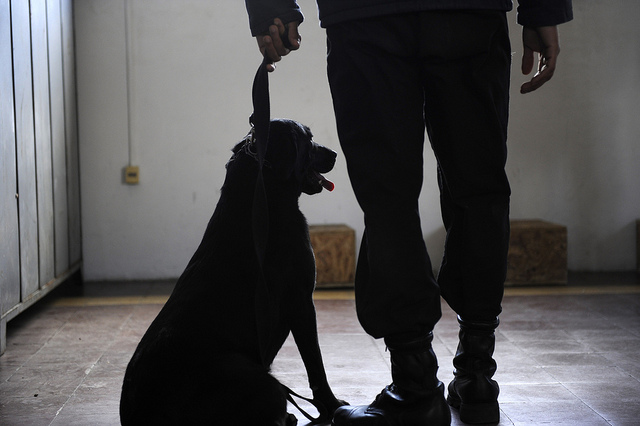
Tomorrow Australia will have a new national security agency: the Australian Border Force. The Australian Customs and Border Protection Service will be merged into the Department of Immigration and Border Protection (DIBP). The ABF will be formed within the DIBP and will become the nation’s unified operational border enforcement agency.
The formation of the ABF is the most significant change to our border management arrangements since the establishment of the Department of Police and Customs in 1975.
These changes are an imperative given the diverse and complex threats at Australia’s borders—including terrorism, serious and organised crime and the new challenge of identifying individuals travelling to fight in foreign conflicts and returnees from Iraq and Syria.
The formation of the ABF operationalises three significant changes in Australia’s border security strategy; a reconceptualisation and securatisation of the border, and the centralisation of border control.
The absence of land borders often makes understanding the physicality of border security difficult. The ABF’s underlying strategies define the Australian border as substantially more complex than a line on a map. The ABF will operate from the perspective that the border is a continuum: it stretches from overseas, to our maritime zones, our physical border and our domestic environment.
The formation of the ABF represents the latest phase in the securitisation of Australia’s border controls. Before 1 July, the front line staff of the DIBP were first and foremost public servants. With the formation of the ABF, these front line operational staff are more akin to police.
The creation of the DIBP is the first visible stage of a centralised border control; a process much like the United Kingdom’s.
In 2008, the UK implemented a unified border security strategy with its UK Border Agency and then Border Force in 2012. The ABF should pay close attention to the British experience, which revealed that size, cultural resistance, poor planning and outdated IT systems can contribute to poor performance at the border. And the ABF won’t be immune from those risks.
Through its portfolio approach, the DIBP has mitigated the risks associated with rapid organisational growth and cultural change. DIBP will assume responsibility for policy, regulatory and corporate functions, while the ABF will draw together the operational border, investigations, compliance, detention and enforcement functions.
The centralisation of border control in the Australian context remains nascent. If the ABF model proves successful, consideration should be given to the centralisation of other border security functions, such as quarantine and biosecurity, to allow for the development of a unified national border security strategy.
Since May 2014, ABF and DIBP have been undertaking a fast-paced program of change. Everything until now has been about setting strong foundations for the long journey towards the maturation of Australia’s new border security era.
Over the last eighteen months the balance between the department’s roles in facilitating trade and travel, and undertaking law enforcement operations have been recast in favour of border security. As Prime Minister Tony Abbott said in February ‘if Immigration and Border Protection faces a choice to let in or keep out people with security questions over them—we should choose to keep them out.’
The impacts of this strategy change are already evident with a 50% increase in the number of travelers denied entry to Australia at the border over the last two years.
The ABF’s security focus will have negative impacts on the performance of its trade and travel facilitation roles; which will have time and resource costs for members of the private sector and the public. This creates an opportunity for private sector entities to play a more active role in Australia’s border security; because it will be in the interest of shareholders to facilitate quick transitions across the border.
Even with the ABF, the Australian border will remain a complex operating environment. A key component of the DIBP strategy for resolving the often unclear and overlapping jurisdictional challenges is the National Border Targeting Centre (NBTC). The NBTC will act as the conduit for securing tactical, operational and strategic engagement from the various departments and agencies involved in border security.
Managing Australia’s border security won’t be smooth sailing—even with these new arrangements. The projected 20% increase in freight, travelers and mail crossing our borders over the next three years will certainly contribute to the challenges that will be faced by the ABF.
The ABF strategy will realise savings through efficiencies such as shared corporate services. But effectiveness of these forces in operational areas will continue to be stretched thin without further government investment. Without continued real growth in border security funding for technological capabilities, the initial gains in border security could well be quickly lost.

